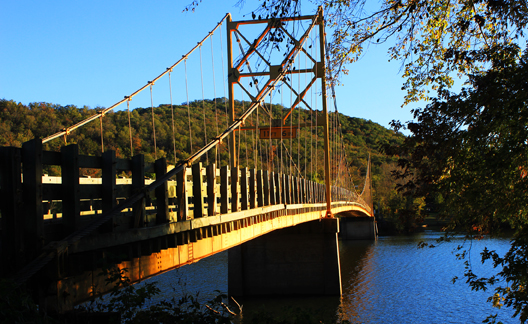The Little Golden Gate of the Ozarks
by Joshua Heston
On winding Highway 187 just as the once untamed White River begins to widen into Table Rock Lake, lies the tiny village of Beaver, Arkansas. Rugged mountains frame this place, seemingly far away from the bustle of Branson’s music tourism or the nearby modernity of Bentonville, Rogers and Springdale.
On the approach from the east, a circuitous path weaves between small farms and across low-water bridges. Early-morning fog often obscures the way while hinting at the closeness of lake water. From the west, the blacktop climbs down the highlands, past Sugarloaf Mountain, Panorama Point, and Salts Bluff, before dropping into a more expansive valley of open farms and rocky ledges.
Either way, the destination is the same: the tiny village of Beaver.
This point in the White River valley has been occupied for a very long time. A government land certificate issued on August 23, 1842 calls the place Ho-Yo-Ubbe, a grant to the Choctaw Indian Nation.
By 1847, however, Beaver was known as Rectors Place and it was about that time a certain “Squire” Wilson A. Beaver of Tennessee build a log cabin here along with a grist mill and a ferry. The route would become a thoroughfare here in the Ozarks.
The doomed Fancher Party, a wagon train slaughtered by Mormans in Utah’s Mountain Meadow Massacre, passed through here in 1857.
A defeated General Sterling Price and some of his troops marched to Beaver and ferried across the White River following the Battle of Pea Ridge (March 7-8, 1862).
A post office was established here on September 22, 1879. “Squire” Beaver was the first post master and he gave his name to the now-official town.
The railroad came to Beaver in 1883 (remants of a now-abandoned railroad bridge jut from the lake waters just north of the present-day town). Beaver became a popular fishing and resort town on the St. Louis and North Arkansas Railroad. During Eureka Springs’ Victorian age, folks would ride out to Beaver for picnics.
Ferries continued to ply the untamed White River until 1926 when a Carroll County construction crew built a modern concrete bridge. A flood would destroy that bridge in 1943.
Submissions for a new bridge were received with a contract going to the Pioneer Construction Company of Malvern, Arkansas, to construct a single-lane suspension bridge for a total proposed cost of $107,785.93. Downriver, the Army Corps of Engineers were planning the construction of Table Rock Lake. Proposed lake levels necessitated a redesign of the bridge, raising the construction 40 feet, and delaying completion of the bridge until 1949.
Since that time, countless travelers have journeyed across this picturesque, one-lane bridge, the beautiful “Little Golden Gate of the Ozarks.”
February17, 2014
plate 1. Beaver, Arkansas is hardly San Francisco but this iconic bridge draws the comparison.
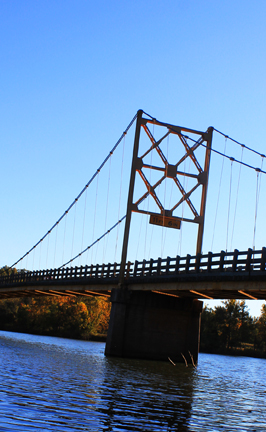
plate 2. The bridge’s suspension system creates an inconic silhouette over the White River.
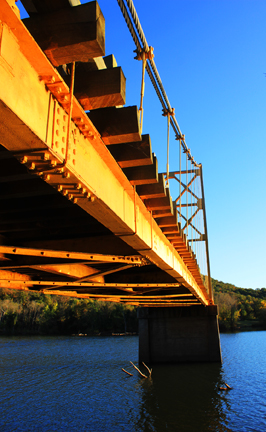
plate 3. The undergirders of the “Little Golden Gate Bridge” shine in the late afternoon light.
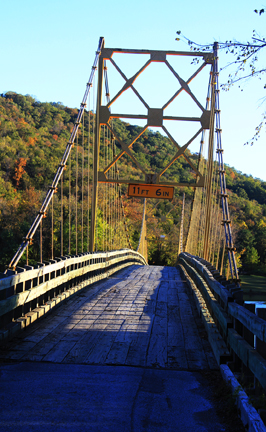
plate 4. Wooden bridge planking gives the suspension bridge a very old-time feel despite its relatively recent construction (1949).
All photo credits: J. Heston. All Plates, Beaver, Arkansas Bridge, Carroll County, Arkansas (10/19/13).)
History notes courtesy of BeavertownArkansas.com. Bridge specifications courtesy of BridgeHunter.com.
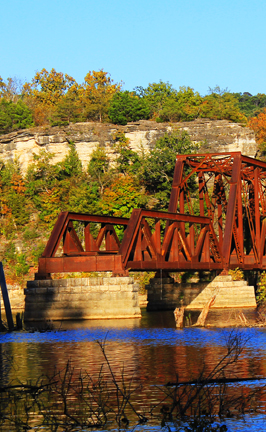
plate 5. Abandoned railroad bridge.
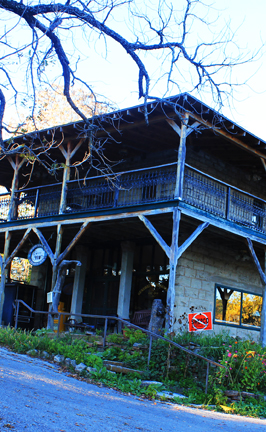
plate 6. The Beaver General Store was established in 1901.
